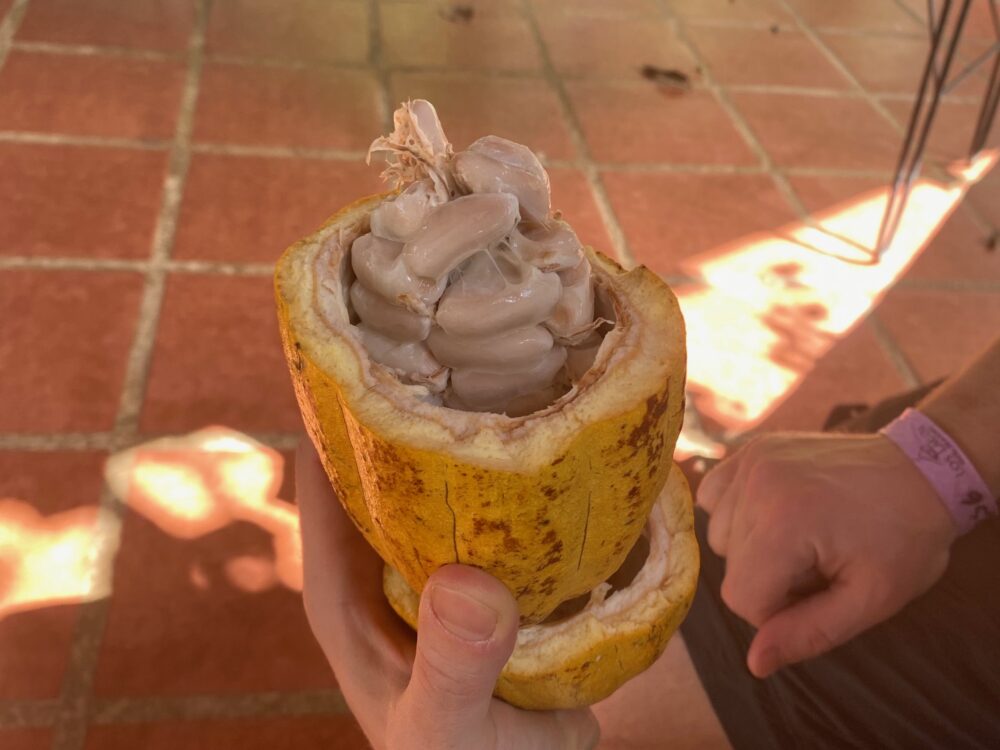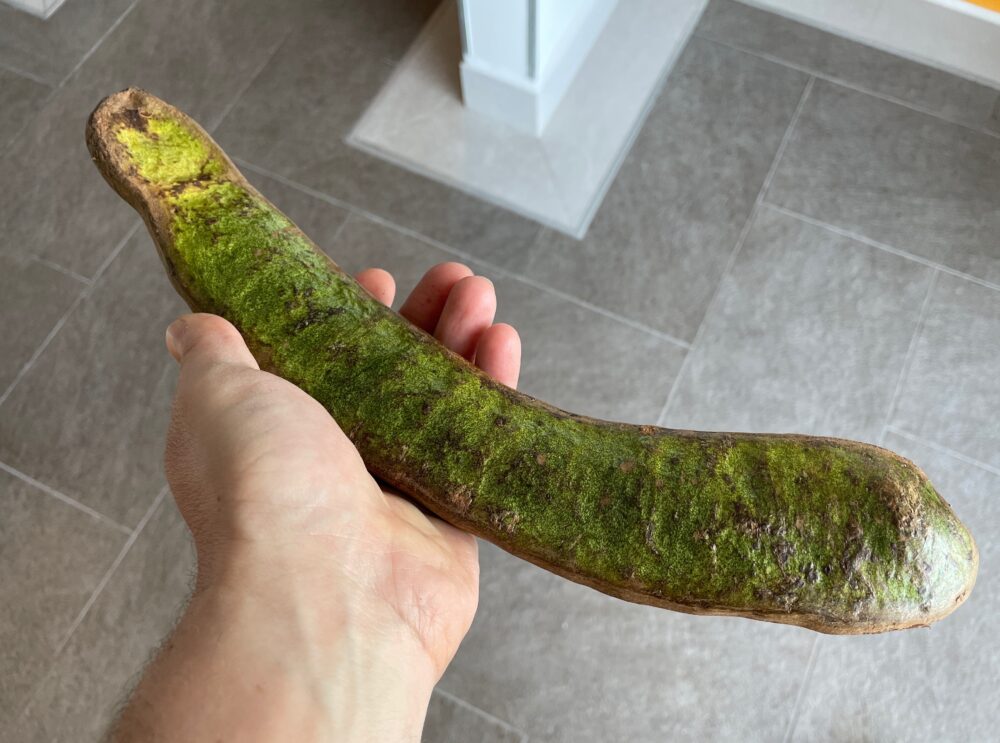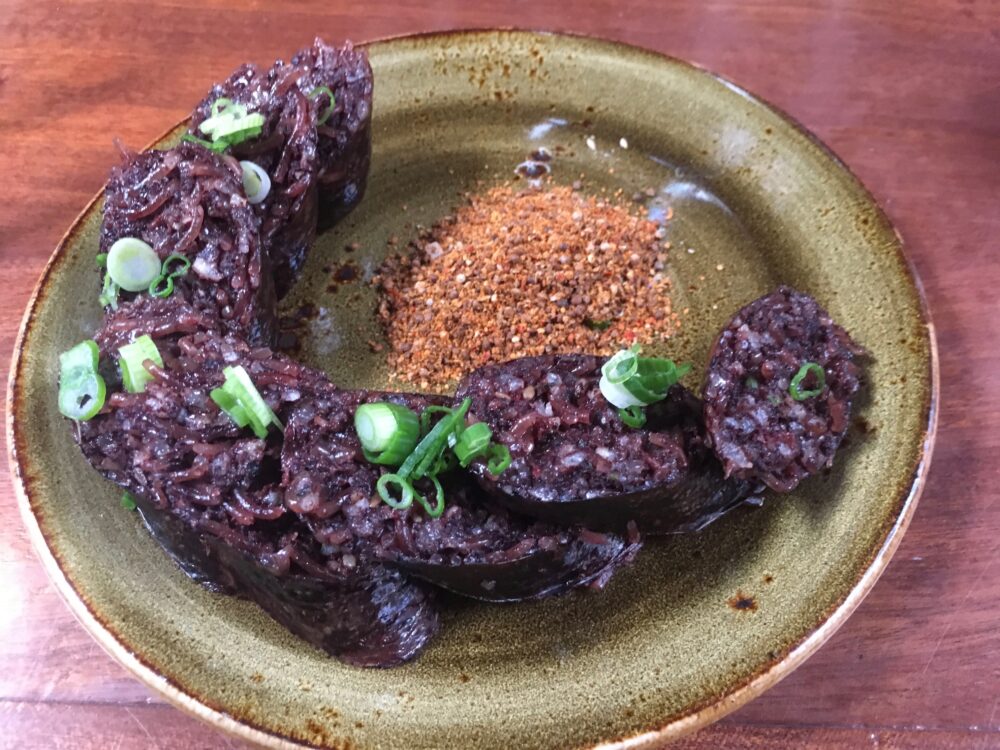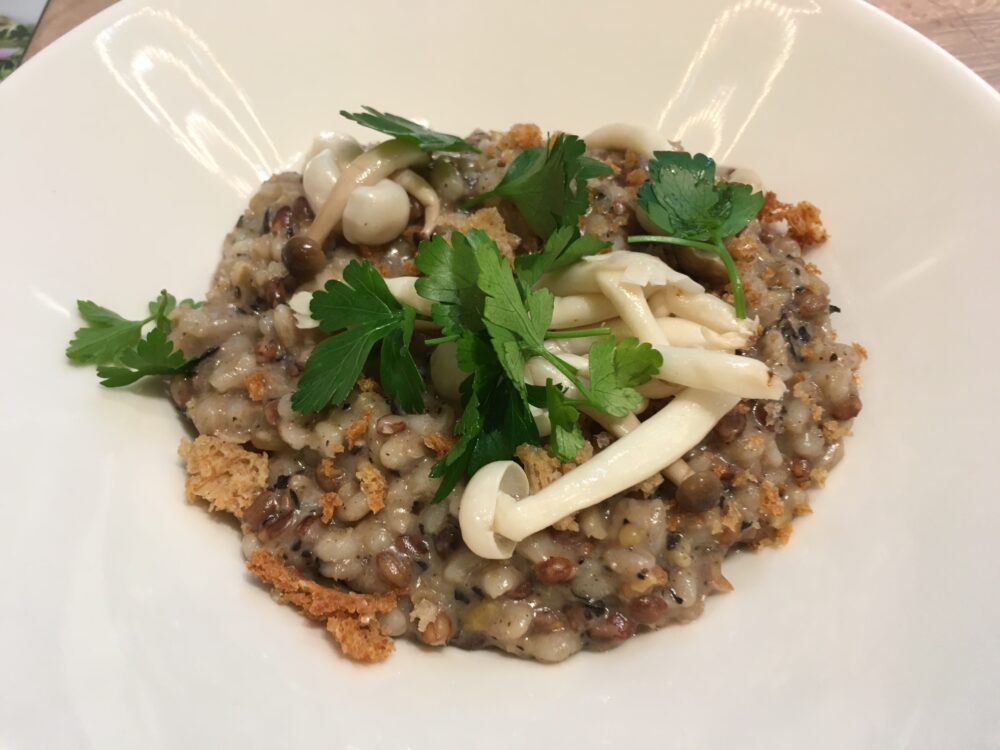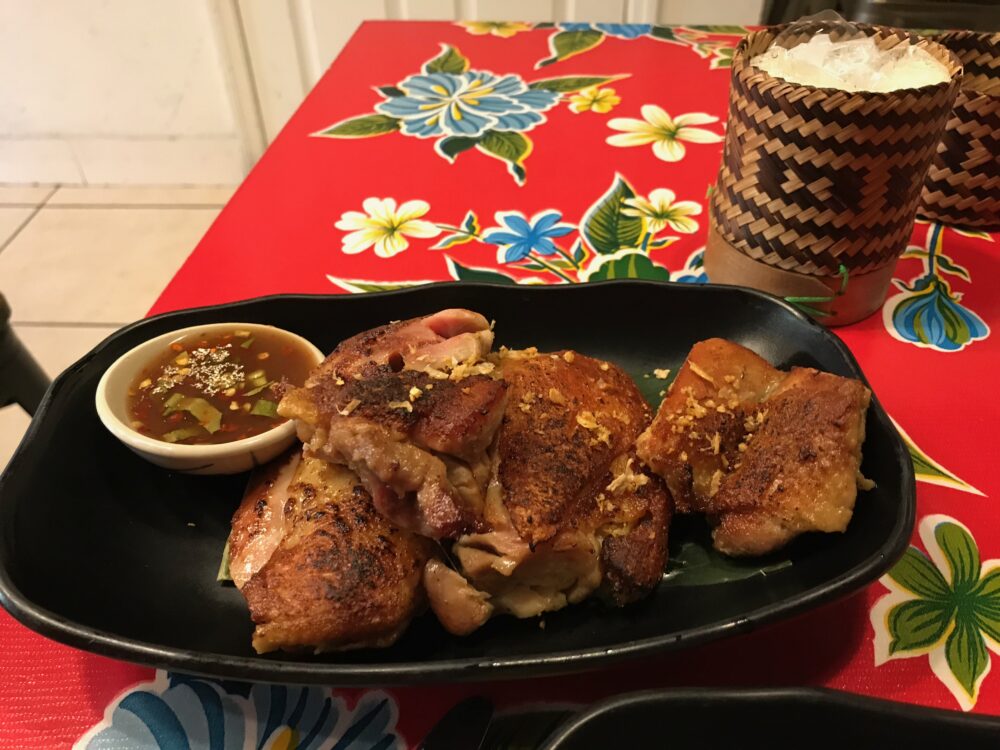Every week, I document another dish that impressed and satiated me during my food adventures around New York City
 As you all know, most of my posts are about food in and around New York City. But prior to 2020, I would take a number of exciting international trips with a gastronomic bent. And it only made sense that some of those iconic international discoveries would end up as a Dish of the Week.
As you all know, most of my posts are about food in and around New York City. But prior to 2020, I would take a number of exciting international trips with a gastronomic bent. And it only made sense that some of those iconic international discoveries would end up as a Dish of the Week.
That is part of why it was so important for me to start our international cooking show.
Well, I am excited to report that I have travelled outside of my kitchen once again. My family and I recently returned from a 9 day trip to Costa Rica.
It was my first time in Central America and one of the things I was most excited about were the exotic fruits and vegetables I could try in the country.
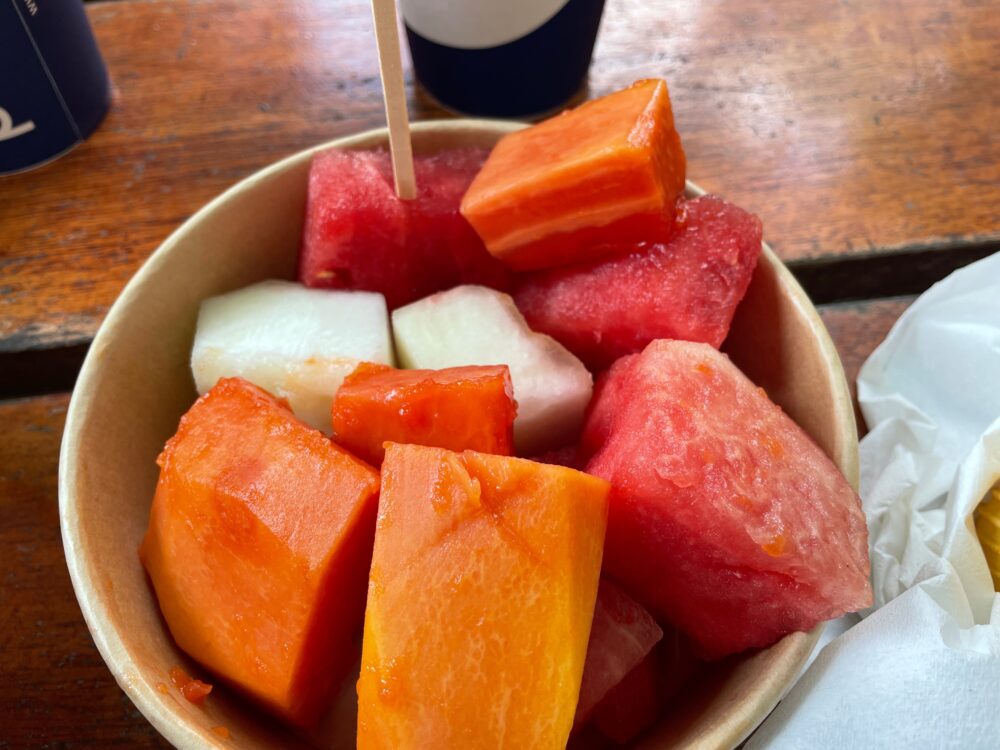
Papaya, pineapple, watermelon, and maracuya (passionfruit) were everywhere but there were some fruits I excitedly sought out that were not at every hotel’s breakfast buffet.
Before I leave for a trip, I do extensive research about all the iconic foods and see if I can try all of them. In Costa Rica, gallo pinto (rice and beans), casado (mixed meat platters), and tres leches (three milk cake) are found at every tourist and local restaurant. Some other dishes, like Chifrijo (beans and fried pork) and Sopa Negra (black bean soup) are a bit harder to find but on menus if you look hard enough.
But the one that I really struggled with is something called Pejibaye. This is a fruit also known as the Peach Palm Fruit. I read it is often made into a creamy soup, but could not find it on any menu’s at local restaurants in the three areas we visited.
I did find it as an ingredient in fancy fusion dumplings at Don Rufino in La Fortuna. Those were interesting dumplings, but I did not get a real sense of this fruit.
I had almost resigned to not trying this local specialty, but I asked one of our drivers about it and he said you can often find them being sold on the side of the road. And he made it his mission to find some for us.
Lo and behold, my hero (his name is Otto) found a local vendor outside of Jaco selling the fruit. I bought a bag and brought it to our next hotel.
That is where our concierge noticed the bag and got very excited about them. I don’t think most tourists find themselves with a bag of pejibaye. He offered to have the chef warm them up and serve them with mayonnaise, which is the local way of enjoying them.
While my fellow hotel guests were easting burgers and fries, I was eating a very local fruit. The pejibaye had the texture of roasted sweet potatoes or plantains but a subtle sweetness under the starchiness. They were absolutely delicious dipped into the tangy mayonnaise.
My local fruit exploration did not stop there by any means.
On a wonderful chocolate tour and workshop called Two Little Monkeys in La Fortuna, I finally got to try the cacao fruit. There was less flesh than I expected with most of the fruit wrapped around the seeds. I really enjoyed the flavor which was sweet, sour, and tropical. There was a slight hint of the fruity undertones in some chocolate but none of the roastiness.
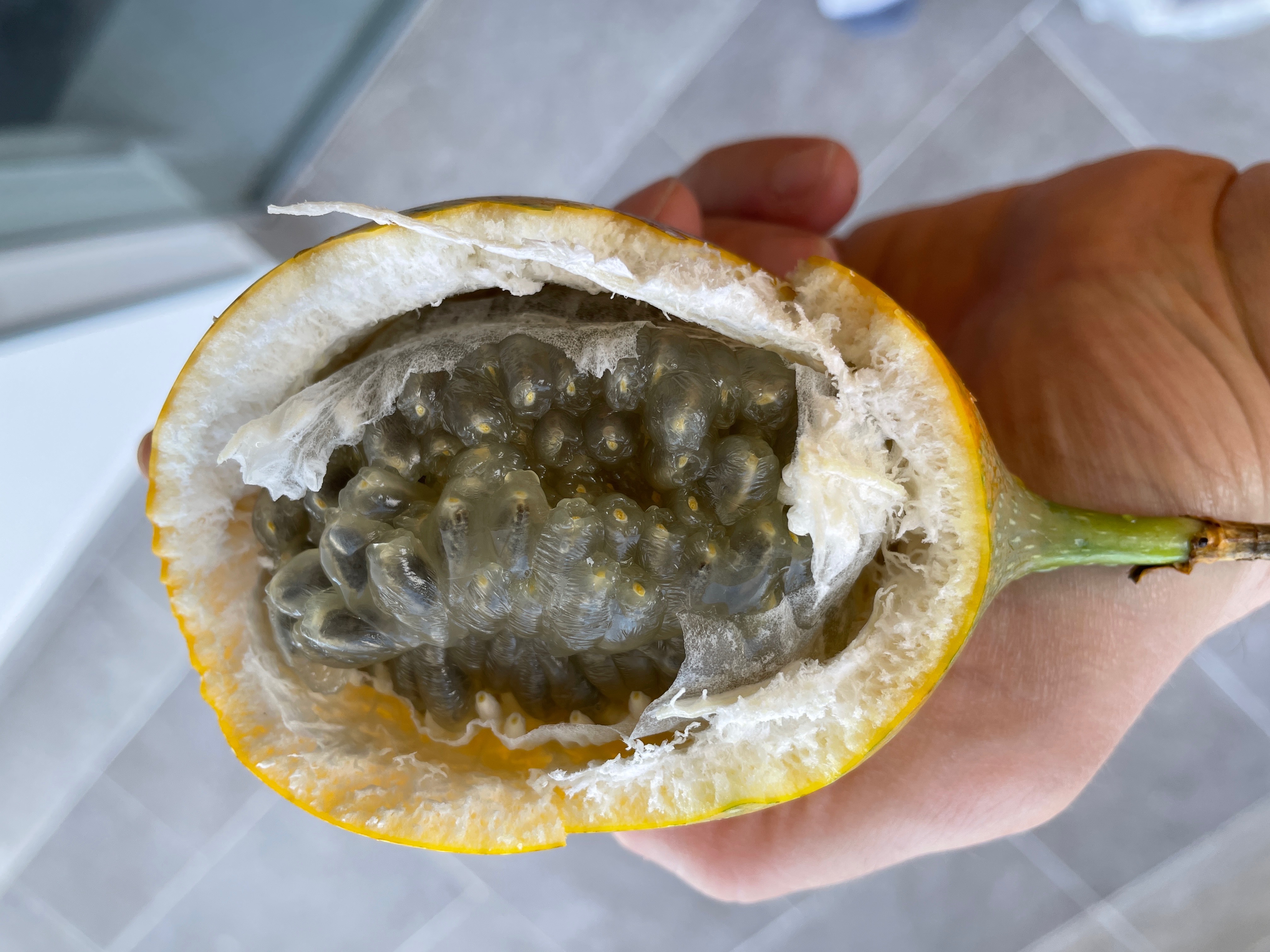
We also revisited an amazing passion fruit that we had tried before in Peru. Granadilla is different than what ticos (Costa Ricans) call maracuya. Both are passion fruit, but the granadilla are not the ones we are used to in the US.
Granadilla’s egg shell shape requires a breaking into and then you get to eat the fruit and seeds that have the most delectable sweet exotic flavor. I wish every fruit tasted like this.
And finally, at the farmers market in Quepos, I picked up a very strange spear-shaped fruit that I would have guessed was in the aloe family.
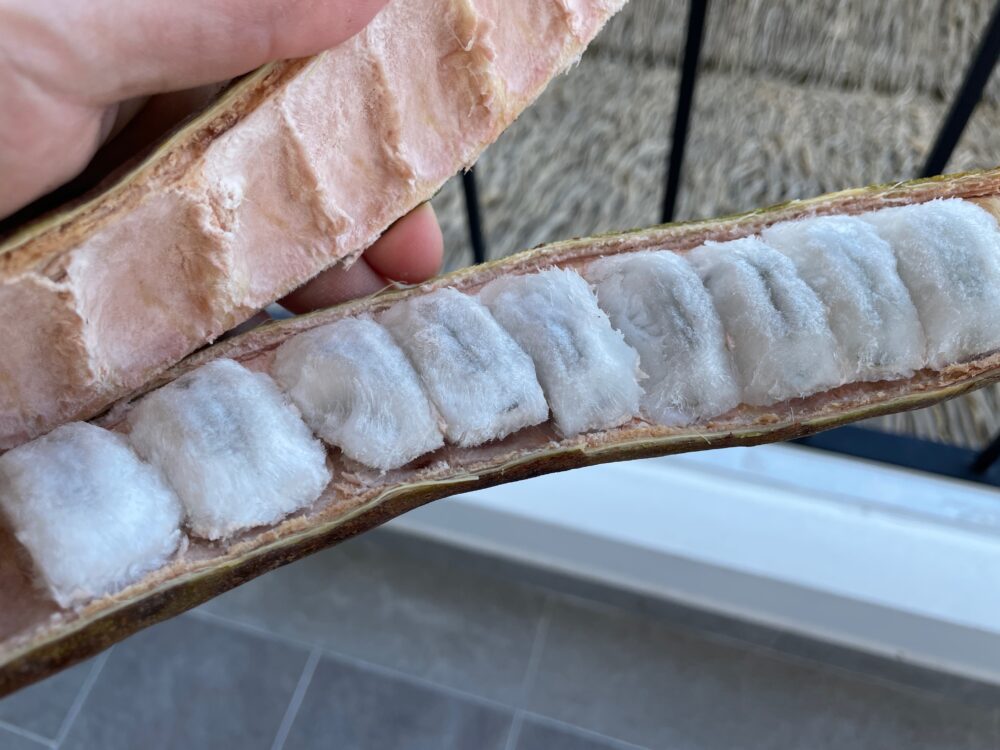
Turns out it is called guaba and is related to guava. Inside the hard green pod are fuzzy little white treasures that are referred to as the “ice cream fruit”.
The fuzziness melts away in your mouth and reveals a very sweet almost vanilla-like flavor that gives way to a dark brown seed. I really wish we had these in the States.
While I ate plenty of meat, rice and beans in Costa Rica, I also got my fair share of vitamins thanks to the local exotic fruit. And I felt like I got a little closer to true local Costa Rican cuisine than many tourists usually do.



